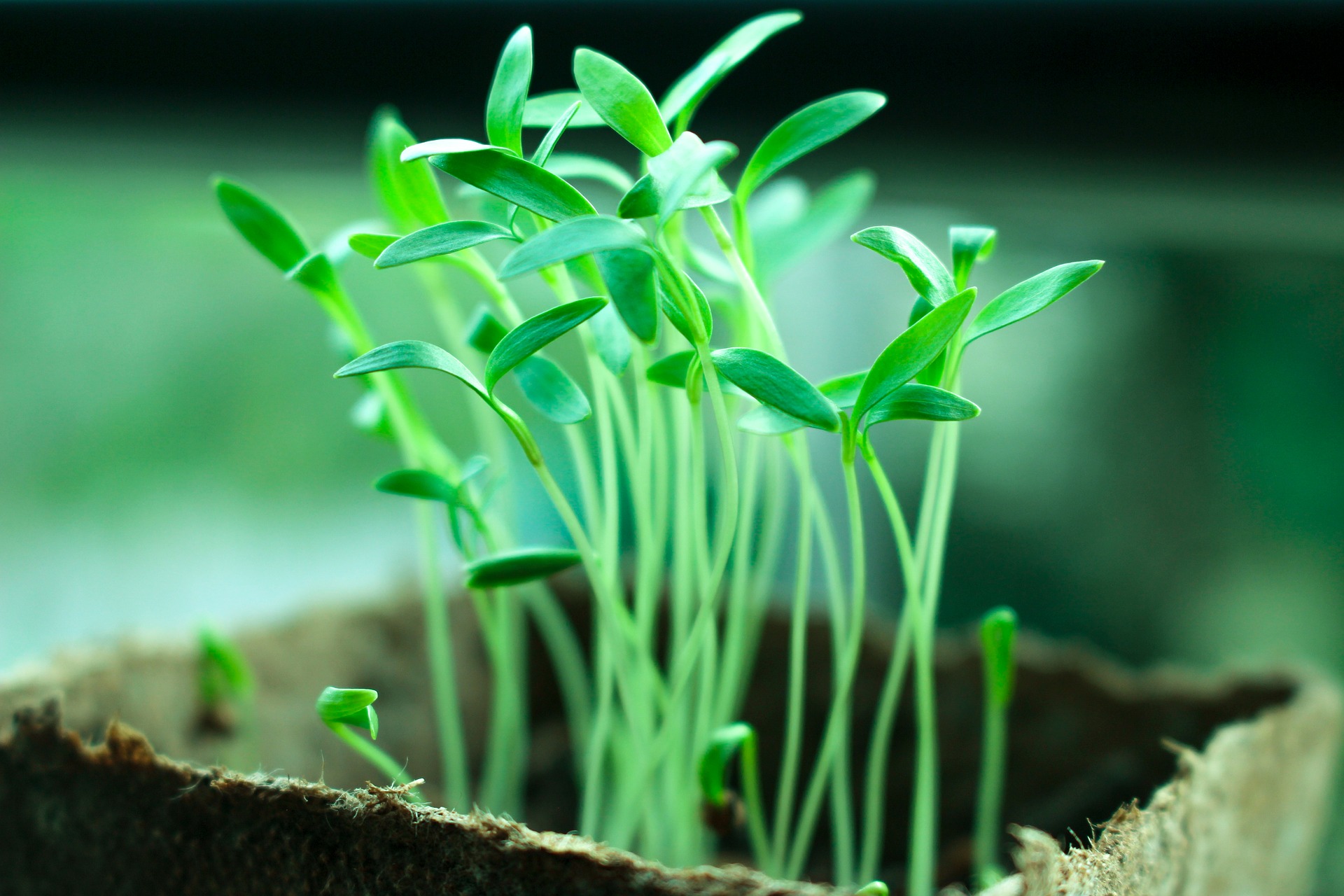
If you start tomatoes from seed, it’s best to start them inside, whether on a window sill or in a cold frame. At any rate, tomatoes need a soil temperature of at least 60 degrees to germinate, though they prefer warmer temperatures, up to 80 degrees. It’s a sure bet that your outdoor soil temperature aren’t going to get that high any time soon!
Tomato seeds need to be started six to eight weeks before the last frost date.
You can start Early Girl tomatoes (or any early tomato variety) under lights as early as February, then, when the weather is mild enough, transplant to the garden with a Wall o’ Waters to help protect the plants against all the frosts.
Traditionally, in Missouri, zone 5, this date has been May 15. With global warming as it is, that date can be moved back to May 1, and even earlier. (Old gardening wisdom is always helpful, but still needs to be updated from time to time.)
So get out your calendar and count back six or eight weeks from your frost date, and that’s your sowing date. (Protip: Keep a gardening calendar and notebook where you write down things like sowing dates, the dates you see frost, etc., and use them next winter when you’re planning for the next planting year.)
Next, line up your planting containers. Whether you use old egg cartons, Solo cups, flower pots, have them scrubbed (well, don’t scrub the egg cartons) if you’re reusing them. (Cleaning up the trays/flower pots will clean up any diseases that might be harbored there – diseases that could affect your young seedlings. Use hot water, soap, and a dash of bleach.)
Be sure that, whatever you use, your planter has plenty of drainage holes! This is not negotiable!
For seeds, it’s best to use a light seeding mix that is high in vermiculite, though not necessary. A regular “soilless” potting mix is fine. The seeding mix, which is more expensive, also is lighter and easier for newly-germinated seedlings to poke their little green heads through.
When I ran a greenhouse, I started my seedlings in trays and then transplanted them to six packs and four packs later on when they were big enough. For small windowsill operations, this won’t be necessary. You can put some soil in a small Solo cup (with drainage holes poked into the bottom), stick two or three tomato seeds in there, and let ‘em grow until they’re big enough to transplant directly into the garden.
The tomato seeds will germinate more effectively if you have a heat mat under the cups or trays. This will warm the soil with dependable heat, allowing the seedlings to germinate more quickly and grow out more quickly. Just be sure to get a thermostat with the mats so you can adjust the temperature so you don’t end up cooking your seeds.
How to Plant Tomato Seeds
Fill your pots, cups, etc. with potting mix, leaving about a half-inch to an inch at the top. Poke two seeds into the middle, about a quarter-inch deep, and cover them. Two seeds are just insurance, just in case one doesn’t sprout. When they get bigger, pinch out the wimpier seedling and let the larger one grow.
Gently pack the soil in around the seeds, as seed-to-soil contact is very important for good germination rates.
Sprinkle water on the soil, and keep the soil moist. Don’t let it dry out, and don’t let it get soggy all the time. Having the soil dry out will kill the seedlings, and constantly wet soil will rot them.
Now one way to keep the soil from drying out is to cover the trays or pots with plastic wrap. This is an easy way to keep the soil moist. Just don’t leave the trays in direct sunlight. One time I had the soil covered this way on one of my flats. I came in from one of my jobs and realized that it had been sitting in the sun all afternoon. I ran over and lifted up the plastic wrap – and steam puffed out. Those seeds were roasted!
Once the seeds germinate, though, be sure to remove the plastic wrap, and also have a small fan to keep the air circulating a little around them. Seedling are susceptible to a disease called “damping off” which is encouraged by poor air circulation.
Damping-Off Disease
I had a bout of damping-off disease in my greenhouse, and it was a mess. Damping-off is a fungal disease that causes newly-planted seedlings to keel over and melt away. It spreads out in a circle, as most funguses do (consider “fairy rings,” which are circles of mushrooms on the forest floor), killing off seedlings as it spreads outward.
I haven’t had damping-off before, since I keep stuff more on the dry side in the greenhouse, which the fungus doesn’t like. However, we had cloudy, cold weather for a whole week, and my trays of seedlings, watered on a Sunday, would not dry out for the rest of the week. No sun, and I couldn’t turn on the fans to pull the air through because it was too cold. Humidity was high. All the conditions were right for the fungus to strike.
Then the disease got into the snapdragons I’d just planted and started knocking them out everywhere. I called everyone I could think of for help. Then I took their advice, and it worked.
The best defense is a good offense. Keep a fan running at all times to keep the air circulating. You should feel the air moving through the whole room, but you don’t have to turn it up so high that it blows the mice out from under the floor. Keep the plants spaced apart to let air move between them. The fungus likes high humidity and temperatures about 70 degrees. The fan keeps the humidity and temperature lower.
This will break your heart, but get rid of everything that’s infected by the fungus. Dump out the soil and plants, and take the waste outside so spores won’t reinfect the plants. As soon as you see the plant keel over, and you know it’s not due to being underwatered, out it goes. I managed to save quite a few flats this way.
If You’re A Tomato I’ll Ketchup With You — Tomato Gardening Tips and Tricks

